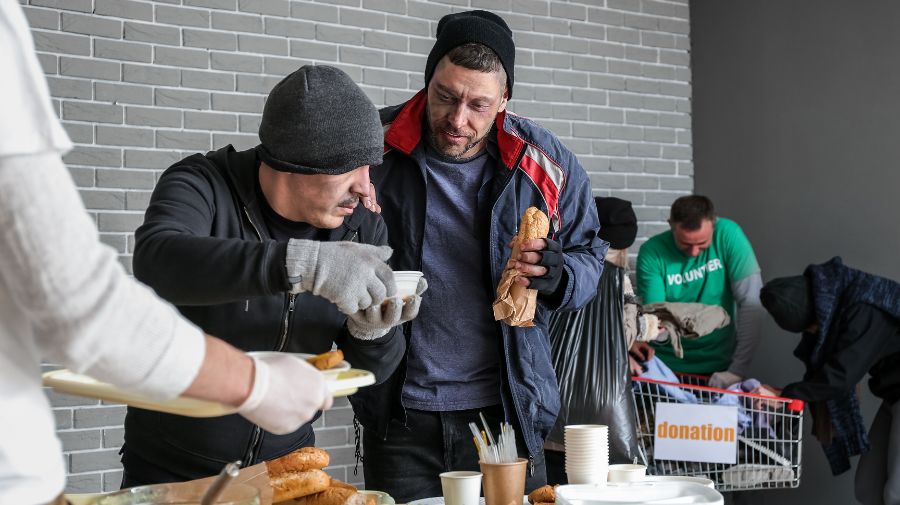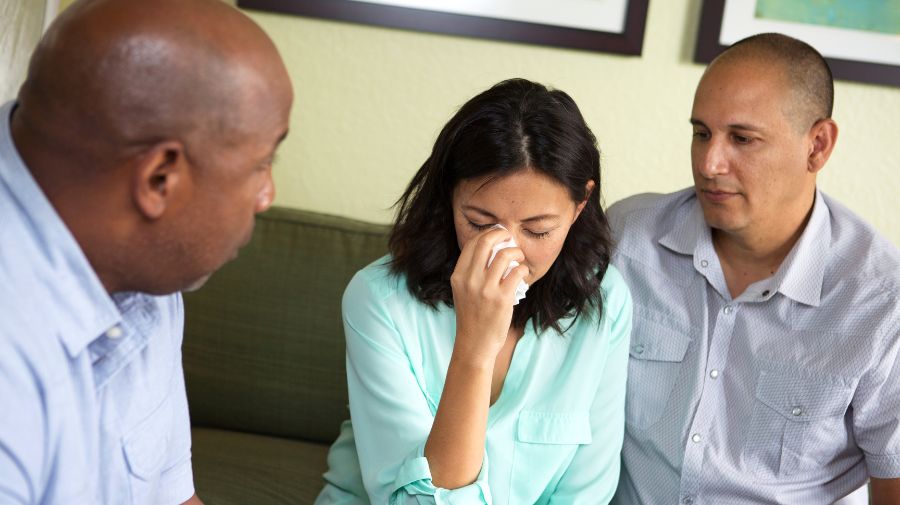Unpacking Executive Order “Ending Crime and Disorder on America’s Streets”

On July 24, 2025, President Donald Trump introduced an Executive Order “Ending Crime and Disorder on America’s Streets.” This policy shifts the federal approach to homelessness by emphasizing civil commitment, stricter grant conditions, and the criminalization of street living. While the order aims to address homelessness, its effects could ripple through mental health care systems and challenge existing resources. Here’s a breakdown of what this means, its potential benefits, and the risks involved.
5 key features of this executive order
1. Civil commitment for treatment
The order encourages moving homeless individuals into long-term treatment facilities if they are deemed unable to care for themselves. It also involves revisiting legal precedents, such as Martin v. Boise, that currently limit the forced removal of unhoused individuals from public spaces.
2. Tightening grant rules
Federal grants would become tied to strict conditions. States would have to enforce bans on urban camping and open drug use, while recipients of federally-sponsored housing would have to participate in abstinence-based addiction or mental health treatment programs.
3. Funding shifts
Funds would get redirected from programs like Housing First (which currently provides stable housing without preconditions) to programs requiring sobriety and treatment compliance. Harm-reduction initiatives, like safe injection sites, would get defunded altogether.
4. Stronger law enforcement
The EO would allocate additional federal funds to local and state agencies to support the removal of homeless encampments, particularly in public spaces. This could involve hiring more personnel, purchasing equipment, or funding partnerships with private contractors to clear encampments. It could lead to more aggressive enforcement actions, including sweeps of homeless populations, to address perceived threats to public order, such as drug use, littering, or crime.
In addition, this executive order would direct federal agencies (e.g., the Department of Justice, U.S. Marshals Service) to assess homeless individuals arrested for federal offenses (e.g., trespassing, drug possession) to determine if they qualify for civil commitment, which is a legal process where individuals are detained involuntarily for treatment or rehabilitation, often for mental health or substance use disorders.
5. Building accountability
Agencies handling homelessness programs must boost performance. For instance, HUD is tasked with pushing grantees to reduce homelessness tied to substance abuse or mental illness through stricter treatment conditions for housing support.
The aims and potential benefits of this EO
The goal of this Executive Order is to make public spaces safer while offering structured treatment for homeless individuals dealing with severe mental illness or drug dependence. By focusing on accountability, therapy, and law enforcement collaboration, the policy seeks to restore social order and reduce visible homelessness in urban areas.
If supported by new funding mechanisms and workforce improvements, this shift could lead to expanded treatment facilities, better coordination between health providers and law enforcement, and more opportunities for individuals to access recovery programs. Some examples include the potential growth of court-directed mental health treatments, which historically have reduced recidivism by 8–13% over two years when well-resourced.
Gaps in resources and workforce challenges could undermine the executive order’s goals
Strain on mental health professionals
One of the largest obstacles to the effectiveness of this EO is the extreme shortage of mental health care providers. By 2037, the U.S. is projected to face deficits like 113,000 addiction counselors and nearly 80,000 psychiatrists. With the Executive Order increasing demand for these resources, the existing infrastructure risks being overwhelmed. For example, even if all new therapists entering the workforce between 2025 and 2035 focused exclusively on homeless care, the supply would still lag behind the treatment need by over 11 million hours annually.
Uneven geographic access
Rural and underserved areas, where up to 65% of counties lack psychiatric nurse practitioners, are particularly vulnerable. Improving telehealth services and expanding Medicaid coverage for lower-cost interventions such as peer support could alleviate part of the burden. However, building these systems will take time and significant collaboration at both the state and federal levels.
Financial squeeze
Medicaid and Medicare could play key roles in funding the policy, but they may struggle to absorb the additional costs. Current federal waivers for housing support and outpatient care operate under strict spending caps, forcing states to prioritize either housing assistance or treatment facilities—not both. This creates a financial tug-of-war that limits the order’s reach.
Downsides and risks of this executive order’s effects
Criminalization over rehabilitation
Critics argue that criminalizing homelessness could shift problems rather than solving them. Without adequate shelters or treatment beds, individuals may end up in jails or emergency rooms instead of stable housing or recovery programs.
Civil liberties concerns
Expanding civil commitment raises alarm about potential overreach. Coercive treatment requirements could deter some individuals from seeking help, eroding trust between vulnerable populations and health providers.
Decline of housing-first approaches
The freezing of Housing First grants could cut permanent supportive housing stock by up to 25% in some areas. This strategy has been widely credited with reducing homelessness without requiring sobriety or treatment compliance, and removing it as a viable option could exacerbate the crisis.
Looming cost burden
Forensic psychiatric beds, homeless shelters, and jail all cost significantly more than community-based supportive housing. Widespread adoption of the order could increase public spending without clear offsets if long-term recovery rates fail to improve.
Concerns about privatization
A major concern with this Executive Order is that it could open the door for private jails, prisons, and healthcare centers to profit from public funds tied to homelessness and mental health treatment. When incarceration and treatment become business opportunities, the focus can shift from helping individuals to maximizing revenue.
Private prison operators, for example, have been linked to lobbying for stricter homelessness laws because increasing arrests and detentions means more profit for their facilities. More aggressive enforcement of anti-camping and drug-use bans, as encouraged by the order, could send more people into these private facilities.
In healthcare, private equity and for-profit hospital chains have taken over many behavioral health services in recent years. Research shows that when hospitals are privatized, they often boost revenue by reducing services for less profitable clients and may not invest in long-term, effective care. For-profit mental health facilities have also faced criticism for keeping individuals in treatment longer than needed or overbilling insurance when mandatory care laws are in place.
Private facilities can operate with less oversight than public ones, making it harder to monitor quality or prevent abuse. Cost-cutting measures, understaffing, and lack of transparency can jeopardize treatment outcomes and safety, especially for vulnerable populations.
As the federal government pivots to more institutional approaches, it is important to ensure that new resources and laws do not simply expand profit opportunities for private operators at the expense of effective, ethical care. Strong oversight, transparency, and a focus on public and nonprofit options are key safeguards.
The path forward
While the intent behind this Executive Order is to provide structure and accountability, its effectiveness will hinge on dealing with the systemic weaknesses of the current mental health and housing systems. Here’s what could help balance the approach:
1. Investments in workforce growth
Expanding training programs for therapists, psychiatrists, and peer-support specialists with federal loan forgiveness incentives is essential to meet rising demand.
2. Strengthen Medicaid waivers
Removing barriers like the Medicaid IMD exclusion, which limits funding for short-term psychiatric stays, could expand available treatment beds.
3. Preserve flexibility
Developing performance-based alternatives to the outright removal of harm-reduction models could address both safety concerns and public health goals.
4. Build data trusts
Coordinating care through privacy-compliant data-sharing systems could help improve outcomes while respecting confidentiality laws.
What lies ahead
Executive Order “Ending Crime and Disorder on America’s Streets” represents the most sweeping federal pivot toward compulsory treatment and criminal-justice integration since the 1965 Community Mental Health Centers Act redirected asylums toward the community. Its success will hinge on whether the United States can scale a behavioral-health workforce already barreling toward a six-figure FTE deficit and on the courts’ tolerance for renewed anti-camping enforcement.
In isolation, the order risks exchanging tents for jail bunks and psychiatric wards without tackling the root supply constraints of therapy, housing, and peer support. Paired with aggressive CMS payment reforms, 1115 waiver flexibilities, and parity-like network guarantees, the EO could catalyze a hybrid system that marries compulsory access with community capacity. Absent those complementary moves, the most likely legacy is a redistribution, rather than resolution, of homelessness-linked disorder.






